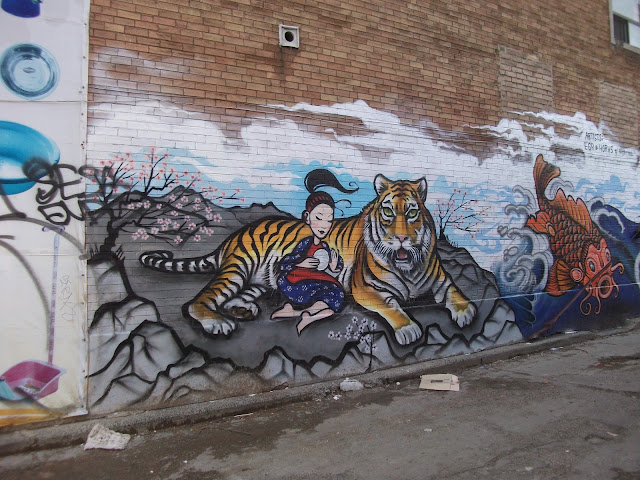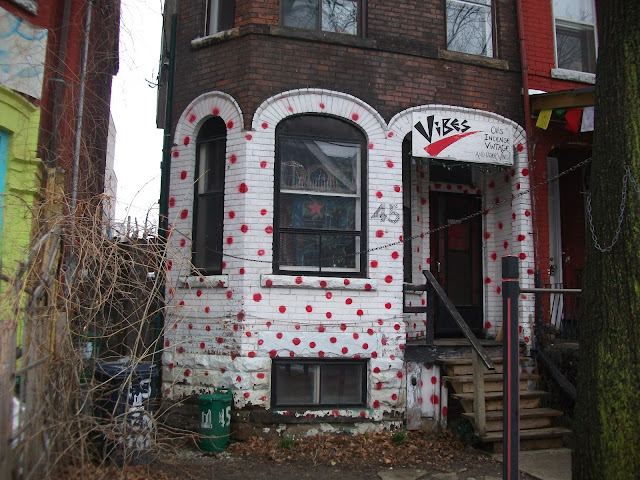 |
| The CN Tower in downtown Torontyo appears shrouded with fog. |
According to City History, the earliest record of Toronto's Chinese community is traced to Sam Ching, who owned a hand laundry business on Adelaide Street in 1878. Despite strict limitations placed on Chinese immigration with the Chinese Immigration Act of 1885, Chinatown took shape over the next two decades along York Street and Elizabeth Street within Toronto's Ward district, as hundreds of Chinese men settled close to Union Station after helping to build the Canadian Pacific Railway across Canada.
By 1910, the Chinese population in Toronto numbered over a thousand. Hundreds of Chinese-owned businesses had developed, consisting mainly of restaurants, grocery stores and hand laundries. By the 1930s, Chinatown was a firmly established and well-defined community that extended along Bay Street between Dundas Street and Queen Street in The Ward. Like the rest of the country, Chinatown suffered a severe downturn in the Great Depression, with the closing of more than 116 hand laundries and hundreds of other businesses. The community began to recover after World War II as Canada's general economic fortunes improved. The Chinese population greatly increased between 1947 and 1960, as students and skilled workers arrived from Hong Kong, Guangdong and Chinese communities in Southeast Asia and the West Indies.
When plans emerged in the late 1950s to construct the new Toronto City Hall at the intersection of Queen and Bay Streets, it became clear that most of Chinatown would be displaced by the project. As Chinese businesses began to relocate, some stores were taken over by other developers, and most stores that occupied the project site were cleared through expropriation. More than two-thirds of Elizabeth Street from Queen to Dundas Streets were destroyed. Construction on City Hall and Nathan Phillips Square began in 1961. In 1967, city planners proposed that Chinatown be moved again for the development of office buildings north of City Hall. This endangered many more businesses. Community leaders, including Jean Lumb, established the "Save Chinatown Committee", with Lumb acting as coordinator and face of the campaign. She later received the Order of Canada in 1976 for her role in helping to save Chinatown.
The Chinese community migrated westward to Chinatown's current location along Spadina Avenue, although a handful of Chinese businesses still remain around Bay and Dundas. Chinatown approximately covers a long, narrow stretch of area centred around Spadina Avenue from Oxford Street in the north to Phoebe Street in the south, with its epicentre at the intersection of Spadina Avenue and Dundas Street West.
 |
| Outside The Art Gallery Of Ontario 317 Dundas Street West |

 |
| Had to get something as a reminder of my visit. This little number made everyone happy! |


 |
| Minsk Congregation Synagogue (1930), Kensington Market, Toronto |

Kensington Market is a distinctive multicultural neighbourhood in downtown Toronto, Ontario, Canada. The Market is an older neighbourhood and one of the city's most well-known. In November 2006, it was designated a National Historic Site of Canada. Robert Fulford wrote in 1999 that "Kensington today is as much a legend as a district. The (partly) outdoor market has probably been photographed more often than any other site in Toronto."
Its approximate borders are College St. on the north, Spadina Ave. on the east, Dundas St. W. to the south, and Bellevue Ave. to the west. Most of the neighbourhood's eclectic shops, cafes, and other attractions are located along Augusta Ave. and neighbouring Nassau St., Baldwin St., and Kensington Ave.
 |
| Map showing the boundaries of Kensingston and Chinatown districts |
 |
| Sign in Kensington says ' do not dump garbage'. |
 |
| One of two 'head shops' in Kensington were you can smoke your favorite joint . |
 |
| This old abandoned house is slated for demolition. |























